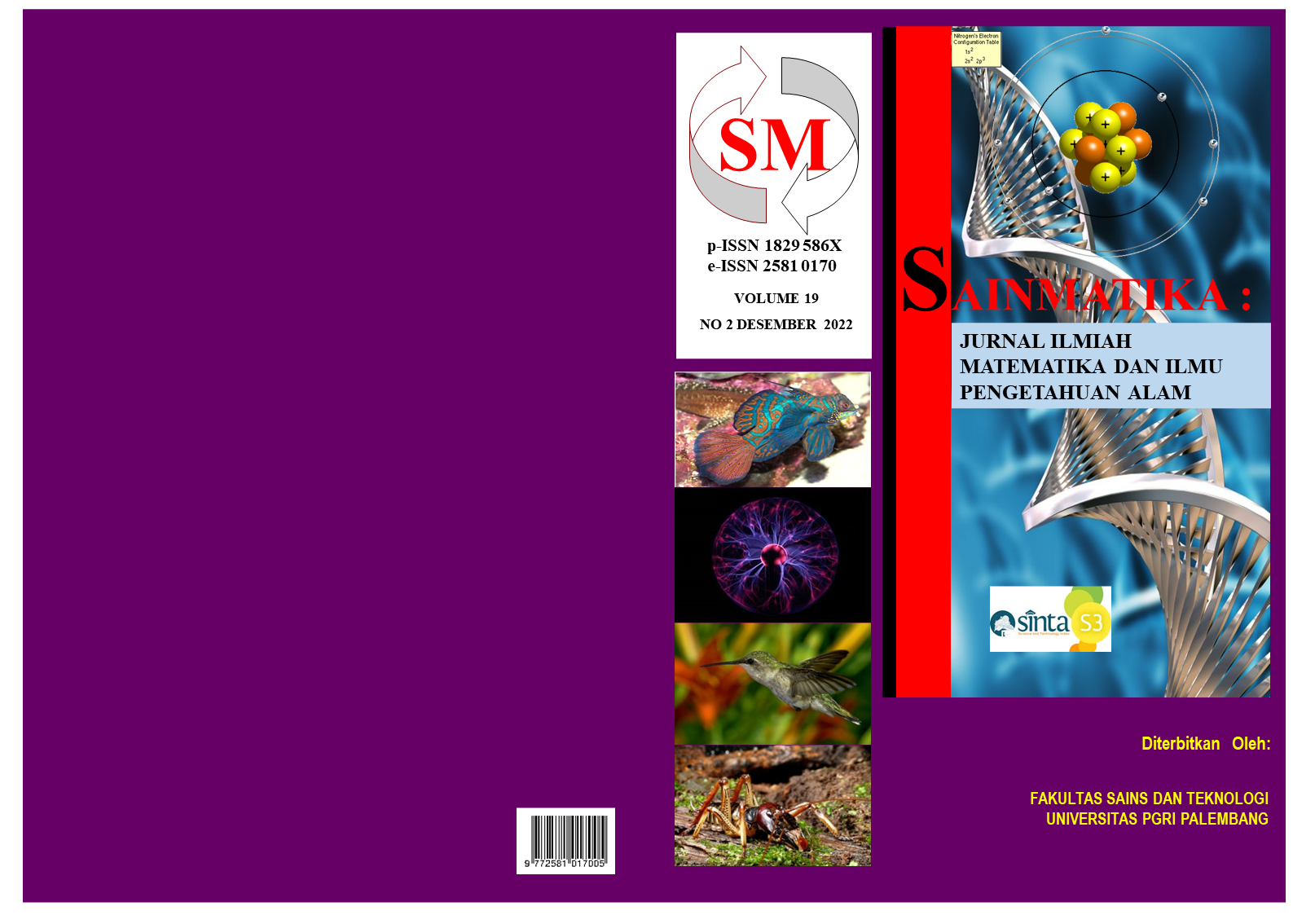Forecasting Produksi Perikanan Budidaya Di Kota Palembang Dengan Metode Autoregressive Integrated Moving Average (ARIMA)
DOI:
https://doi.org/10.31851/sainmatika.v19i2.9164Abstract
The number of aquaculture households in Palembang City continues to increase from 2017 only 682 households to 1,050 households in 2018. But on the contrary in terms of the amount of aquaculture production, the total production decreased by 24,259 tons in 2014 and only 20,327 tons in 2017 (BPS, 2018). One of the steps that can be taken to determine the condition of aquaculture in Palembang is by doing forecasting. This is useful for knowing or predicting the results of aquaculture production with precise accuracy. This study aims to determine the prediction of aquaculture production in Palembang City using the Autoregressive Integrated Moving Average (ARIMA) method. The results of the ACF and PACF plots show that both plots have a tail off pattern. the predictive model obtained is ARIMA (1,0,1) but after over fitting the model, the ARIMA model (2,0,1) is the best model because it has the smallest MAPE value, which is 48,30. Based on the ARIMA model (2,0.1), the forecast values for aquaculture production in Palembang City from 2021 to 2030 are 19542,598 tons, 12846,331 tons, 50682,093 tons, 43389,831 tons, 15352,492 tons. , 9595,313 tons, 26140,949 tons, 36258,543 tons, 29041,898 tons, and 19548.050 tons
References
Azizi., Putri, E.I., Fahrudin, A. (2017). Analisis Faktor-Faktor yang Mempengaruhi Perubahan Pendapatan Nelayan Akibat Variablitas Iklim. Jurnal Sosial Ekonomi Kelautan dan Perikanan, 12(2):225-233.
Badan Pusat Statistik (BPS). 2015. Kota Palembang Dalam Angka Tahun 2015. Kota Palembang.
______________________. 2021. Kota Palembang Dalam Angka Tahun 2021. Kota Palembang.
Bangun RHB. (2016). Penerapan Autoregressive Integrated Average (ARIMA) Pada Peramalan Produksi Kedelai di Sumatera Utara. Jurnal Agribisnis Sumatera Utara, 9(2) 2016 :90-100, ISSN : 1979-8164
Chang, P., Wang, Y. and Liu, C. (2007). The Development of a Weighted Evolving Fuzzy Neural Network for PCB Sales Forecasting. Expert Systems with Applications. 32(1): 86-96. https://doi.org/10.1016/j.eswa.2005.11.02
Cryer JD, Chan KS. 2008. Time Series Analysis With Application in R. New York (US): Springer.
Hartati. (2017). Penggunaan Metode ARIMA Dalam Meramal Pergerakan Inflasi. Jurnal Matematika, Saint, dan Teknologi, 18(1) 2017 :1-10, ISSN : 1979-8164
Makridakis S, SC Wheelwright, McGee VE. 1983. Forecasting : Methods and Applications. 2nd Edition. New York (US): John Wiley and Sons, Inc.
Montgomery DC, Jennings CL, Kulahci M. 2008. Introduction to Time Series Analysis and Forecasting. New Jersey (US): Wiley
Nurjanah, IS., Dadang, R., Dini, A., (2018). Implementasi Model Autoregressive Integrated Average (ARIMA) Untuk Peramalan Jumlah Penumpang Kereta Api Di Pulau Sumatera. Jurnal Teorema : Teori dan Riset Matematika, 3(2) 2018 :145-156, ISSN : 2541-0660
Permatasari, N., Hafiyusholeh, M., Purwanto, S. (2020). Forecasting Hasil Produksi Perikanan Budidaya Laut Menggunakan ARIMA. Jurnal Matematika Algebra, 1(1) Agustus 2020 :73-80
Philips M, Henriksson PJG, Tran N, Chan CY, Mohan CV, Rodriguez UP, Suri S, Koeshendrajana S. 2016. Menjelajah Masa Depan Perikanan Budidaya Indonesia. Penang, Malaysia. Wordfish. Laporan Program :2016-2.
Rosyidah., Raditya, S., (2018). Aplikasi Metode Autoregressive Integrated Average (ARIMA) Pada Peramalan Stabilitas Bank Syariah di Indonesia . Jurnal Ekonomi Syariah Teori dan Terapan, 5(3) 2018 :200-215
Subagyo, Pangestu. 1986. Forecasting Konsep dan aplikasi . Yogyakarta: BPPE UGM.
Theodore R, Jeremy W. Lichstein., Susan A. and Kathleen E. Franzreb. (2002). Spatial Autocorrelation and Autoregressive Models in Ecology. Ecological Monographs Vol. 72, No. 3. Hlm. 445-463.









